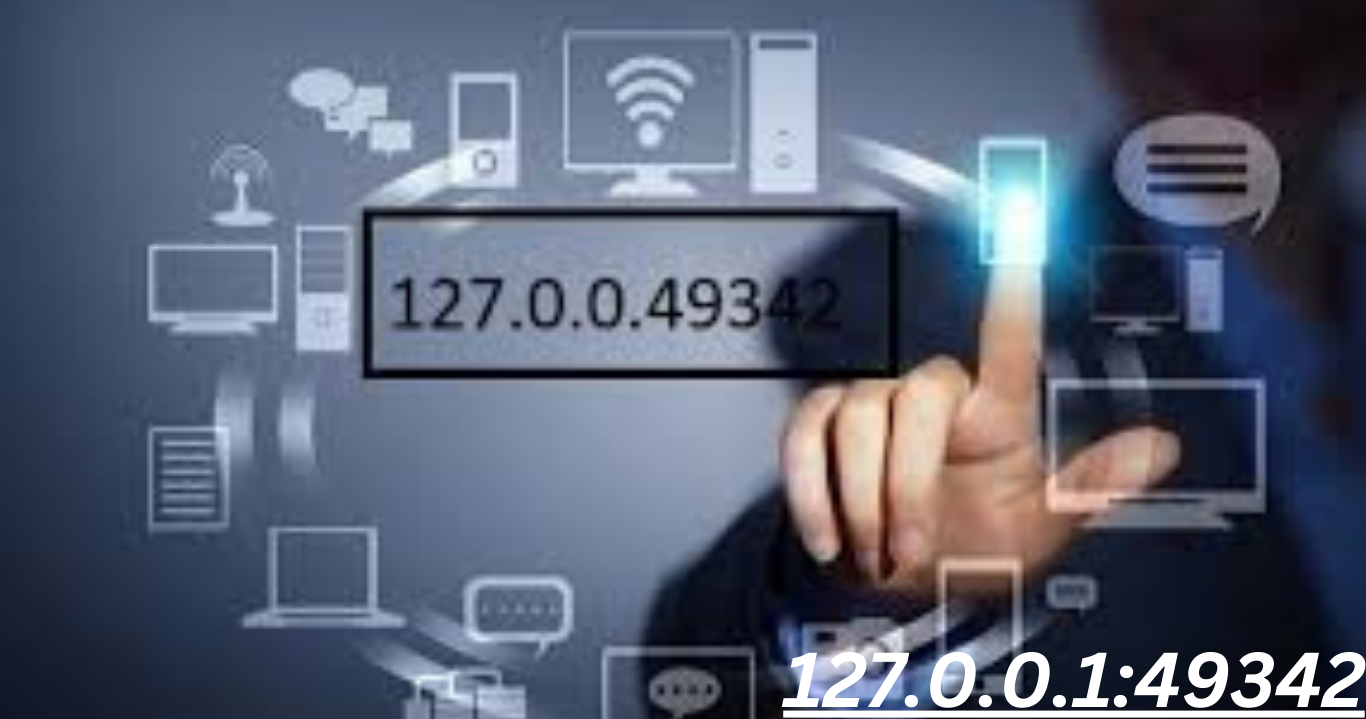Imagine a world where your computer can talk to itself without the interference of external networks. This might sound like science fiction, but it’s very much a reality thanks to an unassuming address: 127.0.0.1:49342. Whether you’re a tech enthusiast, developer, or just curious about how computers communicate internally, understanding this unique address opens up a fascinating realm of possibilities.
In this guide, we’ll dive deep into what 127.0.0.1:49342 is all about and why it’s crucial in network communications. You’ll learn its history and development, how it works under the hood, common uses that you might encounter daily—and even some potential risks associated with it.
Ready to embark on this journey? Let’s unravel the mystery behind 127.0.0.1:49342!
What is 127.0.0.1:49342?
At its core, 127.0.0.1:49342 is a specific type of IP address known as the loopback address. This allows your computer to communicate with itself, making it an essential part of network functionality.
The “127.0.0.1” part refers to the localhost, which is a standard placeholder for your own machine in networking scenarios. The “:49342” signifies a particular port number that distinguishes different services or applications running on that machine.
When you access this address in a web browser or application, you’re effectively sending data back to your device rather than reaching out over the internet. This mechanism plays a vital role during development and testing phases for various software projects—allowing developers to simulate server responses without needing an external connection.
Understanding 127.0.0.1:49342 can enhance troubleshooting skills and improve programming efficiency significantly.
The History and Development of the Address
The address 127.0.0.1, often referred to as “localhost,” has a rich history in the world of networking. It traces back to the early days of the Internet Protocol (IP) suite development in the late 1970s.
Initially designated for loopback purposes, this unique address allows devices to communicate with themselves without any external network involvement. This functionality became essential for testing and troubleshooting network applications.
As technology evolved, so did its importance. Developers embraced it for software testing environments and local servers, providing an efficient way to simulate web interactions without leaving their machines.
The addition of port numbers like 49342 further enhances its utility by allowing multiple services or applications on one device to run simultaneously while maintaining communication integrity through distinct channels. This flexibility made localhost a staple tool among developers and system administrators alike over decades.
How It Works: Breaking Down the Numbers
Understanding the components of 127.0.0.1:49342 reveals much about its function in networking.
The first part, 127.0.0.1, is known as the loopback address. It allows your computer to communicate with itself, bypassing any external network connections.
Why is this useful? It helps developers test applications locally without impacting other systems or networks.
Now, let’s look at the port number, 49342. Port numbers are like doors on a building; they help direct traffic to specific services running on a device.
Each service uses its own unique port for communication—this prevents confusion and ensures data reaches the correct application.
When combined, 127.0.0.1 and :49342 form a complete address that directs requests back to your machine while specifying which service should handle them.
Common Uses of 127.0.0.1:49342
127.0.0.1:49342 is often associated with local development environments.
Developers frequently use this address for testing applications without affecting live data. By routing traffic through the localhost, they ensure that their experiments are safe and isolated.
Web servers, databases, and other services can be accessed via this port number for quick debugging sessions. This setup facilitates a seamless workflow when creating new features or fixing bugs.
Another common application involves network security tests. IT professionals may simulate attacks on their systems using this address to identify vulnerabilities before they become real threats.
Additionally, some software solutions utilize 127.0.0.1:49342 as a default connection point for APIs during development phases, making it easier to integrate various components without external interference.
This versatility makes 127.0.0.1:49342 an essential tool in both programming and cybersecurity realms.
Potential Risks and Security Concerns
Using 127.0.0.1:49342 can pose certain risks, especially if you are not aware of the implications of connecting to this address.
Since it refers to a local server, improperly configured software may expose your system to vulnerabilities. Attackers can exploit these gaps if they gain access through unsecured applications or services running on this port.
Additionally, developers may mistakenly believe that local addresses are safe from external threats. This misconception can lead to inadequate security measures and oversight.
It’s crucial to implement firewalls and routinely check for updates in any software using this address. Failing to do so could leave your system open for exploitation by malicious entities looking for easy targets.
Always monitor network activity associated with 127.0.0.1:49342 closely; irregular patterns might indicate unauthorized access attempts or unusual behavior within your systems.
Troubleshooting Tips for Issues with 127.0.0.1:49342
If you encounter issues with 127.0.0.1:49342, don’t panic. There are practical steps to resolve them.
First, check your firewall settings. Sometimes, security software blocks certain ports, hindering communication on that address.
Next, ensure that your application is running correctly and listening on port 49342. A quick restart can often solve minor glitches.
You might also want to inspect the configuration files of any software using this address for typos or incorrect parameters.
Additionally, clear your browser cache if you’re accessing a web service through this loopback address; stale data can lead to unexpected problems.
Consult logs for error messages related to the connection attempts; they provide crucial insights into what might be going wrong. Addressing these elements systematically will guide you toward resolving issues with ease.
Conclusion
Understanding 127.0.0.1:49342 is essential for anyone interested in networking and technology. This local address serves as a vital part of how devices communicate with themselves during development and testing phases.
Its history reflects the evolution of network protocols, showing how far we’ve come since the early days of computing. By breaking down its components, we can appreciate what makes this particular address unique.
Common uses highlight its relevance across various applications, from web servers to databases, showcasing its versatility in both personal and professional environments.
Yet, it’s important to recognize potential risks associated with misconfigurations or security vulnerabilities that may arise when using this address improperly. Awareness is key to safeguarding your system against these threats.
If you ever encounter issues related to 127.0.0.1:49342, troubleshooting tips can help diagnose problems effectively without too much hassle.
Embracing this knowledge not only empowers users but also enhances their understanding of network functionalities—making them better equipped for future challenges in the tech landscape.



